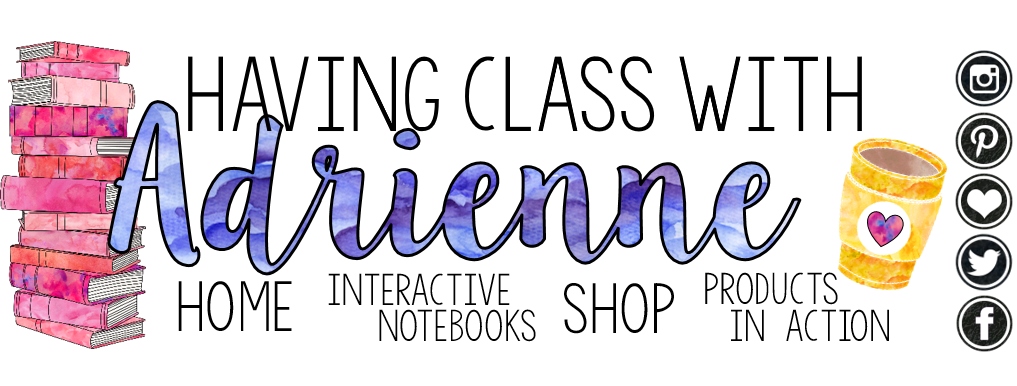I absolutely love reading about how other teachers organize for productivity. I learned many tips and tricks since I started blog-hopping that I don't even know which of my ideas are original. But, that's okay! I thought I would share how I have my area set up, just incase organization makes any other teacher as happy as it makes me!
My Guided Reading Table
1. My Semi-circle table :)- This table makes me happy. Some teachers in my school have rectangle or circle tables, so every year before summer I make sure to plaster my name all over it so there is no chance of it walking off.
2. Water! The students love my plastic, mason jar water cup (Wal-mart). I have reusable star-shaped ice cubes inside that they can't get enough of (also Wal-mart). I also love my blue, damask, tile coaster that I got from Michaels for 2 for $1. I keep one on my reading table and one on my desk.
3. Supplies, Supplies, Supplies: This caddy is a letter tray that I sat pencil baskets inside of. I use it house everything I need for my reading groups.
4. Numbered chairs...not such a big deal. Last year, the group I had would fight over anything...including chairs. So, this year I numbered all my chairs: computer chairs, reading table chairs, students chairs for desks. It turns out this group actually gets along (Hallelujah!), and I am left with a room full of numbered chairs.
5. Our Re-reading Line-Up: The ledge behind my reading table is full with read alouds that we have already read as a class. The students love to reread these books during Daily Five.
6.
Anchor Charts, Aweigh! I keep my most current anchor chart on my easel, the latest after that are behind my reading table for reference, and when I need space I retire them to my back wall.
My Make-Shift Supply Caddy
1. My time-to-stop-what-you're-doing-and-clean-up-now bell: It's actually a very polite sounding bell for something that basically means "move now".
2. Markers for coding text
3. Extra pencils and erasers
4. Red Pens
5. Calculator: This is more for me and not for the kids, if I find myself grading at the front of the room or trying to figure out my class' percent pass during our team meetings.
6. Squooshy Ball: One of my students frequently uses this ball as a fidget while working.
7. Highlighters: Notice the pink tape? Last year I had a lot of things walk away from me so I took the extra precaution this year (like the chairs, this was also unnecessary for this group).
8. Post-its, rubber bands, paper clips
9. Dry Erase marker, eraser, colored pens
Our Whole-Group Meeting Place
1. My Spot: I used to sit in a rocking chair, but I couldn't fit the rocking chair in so close to the reading table and it was just a mess, so I simplified.
2. My laptop cart with a 200 chart poster to hide my goodies.
3. Behavior Management Clock: I got the idea of using an elapsed time clock for behavior management from
Blair Turner and my kids love it! They need to earn 12 hours for the reward and the poster underneath says "Time Elasped, "Time Remaining", and "Reward".
4. Magic 5 reminders for carpet behavior
5. My beloved Promethean Board
6.
Student Unfinished Work Slots
7. Emergency Bag and forgotten umbrellas crate
8. Bookbag hooks
Laptop Cart: My mini-office on wheels
1. Laptop
2. Promethean Remote: It's actually embarrassing how many times I have lost this baby, now it must stay right in it's spot.
3. Markers for anchor charts and glue for interactive notebooks (I do a lot of modeling for interactive notebooks using my document camera
before giving my students the activity, so I have to have all supplies on deck.)
4. Bookbox
5. Crayons kept in a snack case from the Dollar Tree (for interactive notebook work)
6. Interactive Notebooks for all subjects (science and social studies share a notebook)
7. Class Read-Aloud Chapter Book: Right now we are in the middle of The Mouse and The Motorcycle
8. Document Camera
9. Way over in the corner of the picture, you can see my timer. I use this for fluency, cleaning up, partner activities, turn and talk, everything!
Under The Laptop Cart: My Secret Space
1 & 2. I keep student number cards in this $1 tin from Target (they are actually calendar date cards). I pick a number every time I ask a question or want someone to come up to the Promethean, I like to keep the kids on their toes! After I pick the card, I place it in the white tin. When all of the cards have moved over, I put them back and start again.
3. More supplies for my document camera work and teaching at the front of the room: teacher scissors, pencils, pens, dry-erase markers, highlighters
4. I bought this 1/2 crate from Wal-mart 2 years ago and I could not find one during school season this year. I love this crate because it is the perfect size! At the beginning of the year I used it for homework folders, but now I use it to house my materials.
5. Benchmark Literacy Teacher Manual
6. Anecdotal notes for reading groups: Each group has a prong folder with their notes and book.
7. My reading group notebook: The students have notebook they use during reading groups and I always get confused as to what group has done what writing or activity. I stole the idea from my wonderful ESOL teacher to keep a notebook along with the kids. I labeled a 5 subject notebook with a section for each group and I complete the notebook work along with the students.
That's it! Leave me a comment to let me know what you think or how you do things. I am always interested in organization ideas!




























































